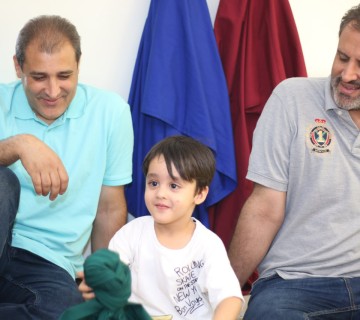Children encounter a spectrum of emotions every day — joy, anger, fear, jealousy, and disappointment among them. Yet, while they experience these emotions deeply, they often lack the ability to identify or articulate them.
Emotional clarity, or the capacity to recognize and express one’s emotions accurately, is a fundamental element of emotional intelligence and psychological development in early childhood.
This skill does not emerge naturally; it must be modeled, named, and nurtured by adults through consistent interaction and guidance.
Understanding Emotional Clarity
Emotional clarity refers to the process by which children learn to recognize what they are feeling, understand why they feel that way, and find suitable means to express it.
When a child says, “I’m sad because my friend took my toy,” instead of crying or becoming aggressive, they demonstrate not only awareness but also regulation — the ability to process emotion constructively.
The absence of this skill often results in confusion, impulsivity, or emotional withdrawal, as children cannot yet translate their internal experiences into words or manageable actions.
Why Children Struggle to Express Emotions
Several developmental and environmental factors contribute to the difficulty children face in expressing emotions clearly:
- Limited emotional vocabulary — Young children are still building the language needed to describe nuanced feelings such as embarrassment or frustration.
- Fear of negative reactions — When caregivers dismiss or punish emotional expression, children learn to suppress it.
- Modeling within the family — Children imitate what they observe. When parents avoid expressing feelings, emotional silence becomes the norm.
These influences underscore the importance of emotionally responsive environments — spaces where feelings are recognized rather than minimized.
The Benefits of Teaching Emotional Awareness
Fostering emotional clarity leads to significant improvements in a child’s social, cognitive, and emotional development:
- Enhanced emotional intelligence: Children begin to interpret their own and others’ emotions accurately.
- Healthier social interactions: Clear communication replaces frustration-driven behaviors.
- Reduced anxiety and aggression: Recognizing emotions diminishes the buildup of unprocessed tension.
- Greater self-esteem: Being acknowledged emotionally reinforces a child’s sense of self-worth and security.
These outcomes highlight emotional education as a cornerstone of early childhood development, not an optional addition.

Practical Strategies for Developing Emotional Awareness
Cultivating this ability requires daily practice and patient modeling. Effective strategies include:
- Storytelling and role-play: Through characters and scenarios, children learn to identify and discuss emotions in a safe, imaginative context.
- Naming emotions in real moments: Labeling what a child feels — “You seem disappointed because you couldn’t finish your puzzle” — connects words to emotional states.
- Validation instead of dismissal: Accepting a child’s emotions (“It’s okay to be upset”) encourages emotional honesty and self-trust.
- Adult modeling: When adults openly share their own feelings — “I feel tired and need some quiet time” — they normalize healthy emotional communication.
Common Barriers in Parental Reactions
Even well-intentioned parents may unintentionally hinder emotional learning by:
- Dismissing feelings (“You shouldn’t be sad”)
- Distracting the child instead of listening
- Concealing their own emotions to appear composed
Such responses teach children that emotions are inconvenient rather than natural. Emotional openness from adults, on the other hand, fosters security and empathy.
The Role of Early Education
In structured environments such as preschools, educators can intentionally promote emotional growth.
Activities like “feeling circles,” expressive art, and puppet play allow children to observe, name, and manage emotions in communal, age-appropriate ways.
These exercises not only support emotional literacy but also strengthen empathy and cooperation within peer groups.
Conclusion
Emotional clarity forms the foundation for lifelong emotional intelligence, resilience, and empathy.
When children are guided to recognize, name, and manage their feelings, they develop the emotional stability required for healthy relationships and adaptive behavior.
Early education that values emotional understanding — such as the approach practiced at Pardis Solaleh Preschool — invests not just in the mind of the child, but in the heart as well.




بدون دیدگاه